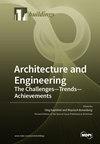基于 BIM 的机器人导航和检测任务本体论
IF 3.1
3区 工程技术
Q2 CONSTRUCTION & BUILDING TECHNOLOGY
引用次数: 0
摘要
在建筑施工和运营阶段,检测机器人的出现扩大了应用范围,增加了技术挑战。此外,基于建筑信息模型(BIM)的机器人检测方法有望改善检测过程,因为 BIM 模型包含建筑物生命周期不同阶段的精确几何图形和相关信息。一些研究已将 BIM 用于导航目的。此外,一些研究侧重于开发基于知识的本体,以便在机器人环境中开展活动(如 CRAM)。然而,该领域的研究仍然有限且零散,有必要开发一个综合本体,作为实现基于逻辑的检查的第一步。本文旨在为基于 BIM 的机器人导航和检测任务(OBRNIT)开发一个本体。本体可以帮助参与开发机器人检测系统的系统工程师识别基于 BIM 信息的机器人检测和导航任务之间的不同概念和关系。所开发的本体涵盖四类主要概念:(1) 机器人概念;(2) 建筑概念;(3) 导航任务概念;(4) 检测任务概念。本体使用 Protégé 开发。为实现目标,我们采取了以下步骤:(1) 查阅现有文献以确定概念;(2) 确定开发 OBRNIT 的步骤;(3) 开发本体的基本组件;(4) 对开发的本体进行评估。通过案例研究和调查对 OBRNIT 的语义表示进行了评估。评估结果证实,OBRNIT 涵盖了该领域的概念和关系,可用于开发机器人检测系统。在康考迪亚大学一栋大楼进行的案例研究中,OBRNIT 被用于支持检测机器人进行导航,以识别天花板泄漏。来自 33 位专家的调查结果显示,28.13% 的专家非常同意使用 OBRNIT 开发机器人导航和检测系统,65.63% 的专家表示同意。这凸显了 OBRNIT 在提高检测可靠性和可重复性、解决检测环境中交互的复杂性以及支持开发更自主、更高效的机器人检测系统方面的潜力。本文章由计算机程序翻译,如有差异,请以英文原文为准。
Ontology for BIM-Based Robotic Navigation and Inspection Tasks
The availability of inspection robots in the construction and operation phases of buildings has led to expanding the scope of applications and increasing technological challenges. Furthermore, the building information modeling (BIM)-based approach for robotic inspection is expected to improve the inspection process as the BIM models contain accurate geometry and relevant information at different phases of the lifecycle of a building. Several studies have used BIM for navigation purposes. Also, some studies focused on developing a knowledge-based ontology to perform activities in a robotic environment (e.g., CRAM). However, the research in this area is still limited and fragmented, and there is a need to develop an integrated ontology to be used as a first step towards logic-based inspection. This paper aims to develop an ontology for BIM-based robotic navigation and inspection tasks (OBRNIT). This ontology can help system engineers involved in developing robotic inspection systems by identifying the different concepts and relationships between robotic inspection and navigation tasks based on BIM information. The developed ontology covers four main types of concepts: (1) robot concepts, (2) building concepts, (3) navigation task concepts, and (4) inspection task concepts. The ontology is developed using Protégé. The following steps are taken to reach the objectives: (1) the available literature is reviewed to identify the concepts, (2) the steps for developing OBRNIT are identified, (3) the basic components of the ontology are developed, and (4) the evaluation process is performed for the developed ontology. The semantic representation of OBRNIT was evaluated through a case study and a survey. The evaluation confirms that OBRNIT covers the domain’s concepts and relationships, and can be applied to develop robotic inspection systems. In a case study conducted in a building at Concordia University, OBRNIT was used to support an inspection robot in navigating to identify a ceiling leakage. Survey results from 33 experts indicate that 28.13% strongly agreed and 65.63% agreed on the usage of OBRNIT for the development of robotic navigation and inspection systems. This highlights its potential in enhancing inspection reliability and repeatability, addressing the complexity of interactions within the inspection environment, and supporting the development of more autonomous and efficient robotic inspection systems.
求助全文
通过发布文献求助,成功后即可免费获取论文全文。
去求助
来源期刊

Buildings
Multiple-
CiteScore
3.40
自引率
26.30%
发文量
1883
审稿时长
11 weeks
期刊介绍:
BUILDINGS content is primarily staff-written and submitted information is evaluated by the editors for its value to the audience. Such information may be used in articles with appropriate attribution to the source. The editorial staff considers information on the following topics: -Issues directed at building owners and facility managers in North America -Issues relevant to existing buildings, including retrofits, maintenance and modernization -Solution-based content, such as tips and tricks -New construction but only with an eye to issues involving maintenance and operation We generally do not review the following topics because these are not relevant to our readers: -Information on the residential market with the exception of multifamily buildings -International news unrelated to the North American market -Real estate market updates or construction updates
 求助内容:
求助内容: 应助结果提醒方式:
应助结果提醒方式:


